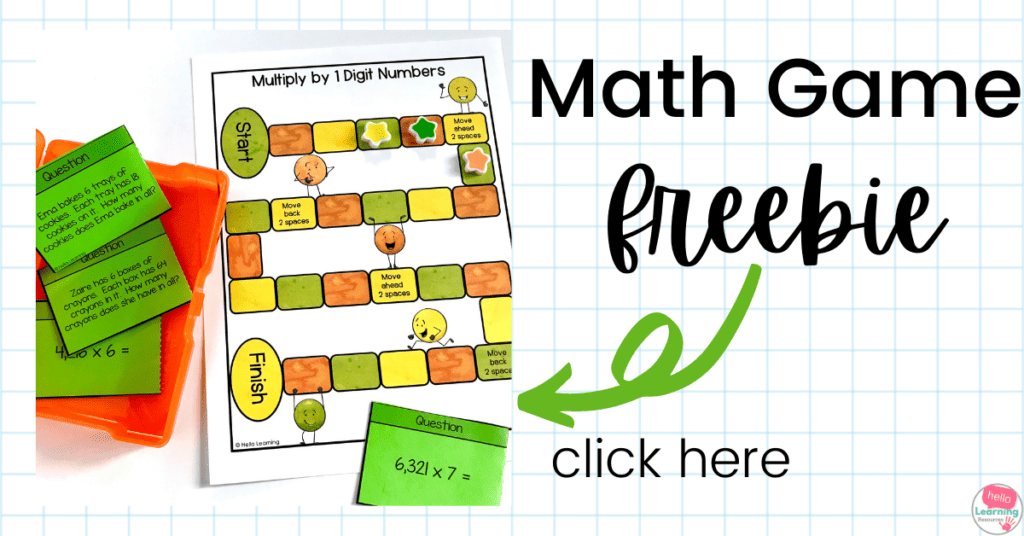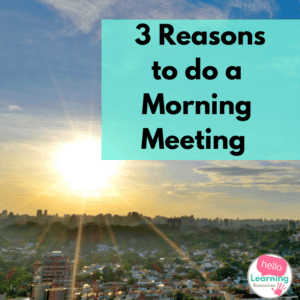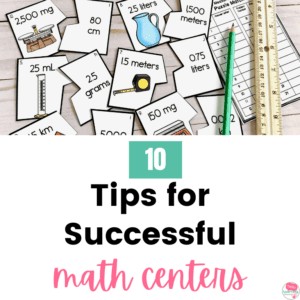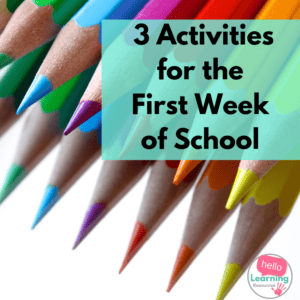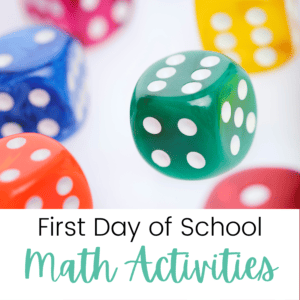10 Ways to Make Math Fun
Let’s talk about the many ways we can make math fun!
Too often I hear kids say “math is boring” or “I don’t like math”.
My guess is that what they find boring, and don’t find fun, are the traditional math drills and worksheet pages many of us grew up with.
For some kids, that is all they have experienced in math class.
Math is such a fun subject. It is full of explorations, questions to solve, and its applications to our everyday life.
Finding ways to make math fun for upper elementary students can boost student confidence, engagement, and performance.
There are many ways we can make math fun for upper elementary students. Read on to learn about 10 ways I like to have fun in math in my classroom.
Play Math Games
Kids love games and they love competition. Math games are a low-risk form of competition that can be packed full of math content. Put math skills practice in a game format and it will surely make math fun!
There are many different math games you can play with dice or a deck of playing cards.
You can also find a variety of printable math games online.
CLICK HERE to see my favorite math games to use in the classroom with upper elementary students. These are my favorite games because they have a wide variety of questions, are self-checking, and involve a good mix of skill and luck so the student with the strongest math skills will not necessarily always win.
Grab a FREE copy of a multiplication math game by CLICKING HERE.
Encourage Discussion
Some students feel comfortable asking questions, sharing ideas, and presenting answers in math class, but many students are hesitant to speak up.
The more students feel comfortable communicating in math class, the more it will make math fun for them.
I like to encourage discussion by accepting many different ideas, strategies, and answers before commenting on whether each response is correct or not. This allows students to defend their answer with further explanation, or change their answer when presented with the thoughts others share.
In this format, students do not have to worry about being singled out in front of the whole class or worry about getting an answer wrong. By discussing all of the answers shared, no one remembers exactly who shared which response. It just becomes a rich discussion about the validity of all the answers suggested.
I have watched many hesitant students begin to enjoy sharing answers and how they can to their solutions in this discussion format. Feeling comfortable sharing thoughts and being a part of a class discussion will help students have more fun in math!
Incorporate Technology
Kids love technology and there are so many fun and beneficial websites and apps available to us today that can help make math fun!
You can use technology as a math center, a daily math practice activity, a math menu activity, math warm-ups, and more!
Some of my favorite websites, that kids also love are:
- IXL
- Kahoot
- Steve Wyborney (Splat, Esti-Mysteries)
- SolveME Puzzles (Mobiles, Who Am I, and Mystery Grids)
- Xtra Math
Incorporate Movement
There are many ways to incorporate movement into your lessons to make math fun!
Task cards are a great way to get kids up and moving around the room. You can also make task cards a partner activity, allowing students to work together with their peers, which always increases the fun!
Another fun movement activity is Four Corners.
Pose a problem to students with 4 multiple choice answers. Each answer will correspond with the numbers or letters you have posted in each corner. Students move to the corner that matches the answer choice they choose.
Clothesline math is a fun number line activity that kids love! Hand out 5-10 cards with numbers on them. They can be whole numbers, decimals, or fractions. The students then line themselves up, in order, from least to greatest. This is a great activity to practice comparing and ordering numbers, and it also gets kids up and moving.
Any activity that combines movement with learning will help make math fun for your students!
Manipualtives
Manipulatives help students make meaning of abstract ideas. They allow students to visually and tactilely work with math concepts.
Some of my favorite math manipulates for upper elementary students that make math fun and meaningful are:
- base 10 blocks
- pattern blocks
- place value disks
- fraction bars
- connecting cubes
- math dice with a variety of whole numbers
- fraction dice
- decimal dice
Partner and Group Work
Upper elementary kids are social and love to work with their friends and peers.
Allowing students to work with partners or in small groups can help make math fun.
While working in partners or small groups, students build communication skills and learn from each other.
Kids have a way of explaining strategies and how they arrived at solutions to each other that builds confidence and understanding.
Kids have more fun in math when they get a chance to learn from and work with their classmates.
Math Projects
Math projects are a great way to have fun in math class!
Projects connect math skills to real-world applications. They give students a chance to use the math they are learning in a real-world situation.
Projects will answer the often asked “When will we ever use this?” question.
You can use math projects as a form of assessment. They are often pretty open-ended, so they provide a lot of built-in differentiation and individualization for students.
When I ask my students what makes math fun for them, many of them say math projects!
CLICK HERE to see some of my favorite math projects to use in upper elementary.
Providing Student Choice
Giving students choices in their learning will provide them with ownership and responsibility for their learning.
The ability to make choices, no matter how big or small, will increase student engagement and make math fun for students.
Student choice can be as simple as asking them to pick one of two warm-up questions to solve or which set of numbers to use in a word problem.
You might give students the choice of whether to practice a math skill on a worksheet, using technology, or through a matching puzzle.
It can also be a more complex choice like which items on a math menu to complete or which direction their math project will take.
Giving choices is a powerful way to build independence and make math fun.
Math Warm Ups
Using high-interest questions and activities as math warm-ups can spark students’ interest right at the beginning of math class and put students in the “math is fun” mindset.
Some of my favorite fun math warm-up activities are math puzzles, brainteasers, high-interest word problems, number talks and number strings, choral counting, mystery numbers, and mental math.
Starting off math class in a positive and engaging way can make math fun as soon as math starts!
Want to try some of the math warm-up activities I mentioned above? Grab a free set of math activities that are perfect for math warm-ups by CLICKING HERE.
Encourage Questions
When introducing new topics or solving problems as a class, I always encourage asking questions.
Getting kids involved in discussions keeps them engaged and makes math fun.
Some kids are hesitant to ask questions because they think everyone else understands or knows how to do the math skill, and they don’t want to be singled out as the only one who “doesn’t get it”.
I make a huge effort to let students know that that simply is not true. If one student has a question about something, I am sure there is at least one other student with the same question.
I like to model asking questions by thinking out loud as I teach and solve problems. I ask myself questions (out loud) that I anticipate students will probably have their own questions about.
Modeling asking questions and working to make your classroom a safe and supportive place for students to ask math questions will go a long way in student success. When students feel comfortable, supported, and free to ask questions they are more likely to be successful, and success will always help make math fun!
There are so many ways you can make math fun for your upper elementary students.
I hope this post gave you some new tips and ideas that you can incorporate into your classroom to help make math fun for your students!
Pin This Post




